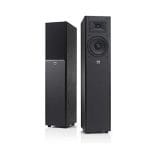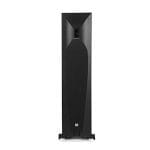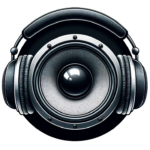Comparing Two Titans: JBL Arena 170 vs. JBL Studio 580
In my years of tinkering with HiFi equipment, I’ve had the pleasure of experiencing a spectrum of sound quality, build integrity, and aesthetic prowess that speakers can offer. Among the various brands, JBL has time and again proven its worth. Today, we dive deep into two particular models that have caught the eye of audio enthusiasts: the JBL Arena 170 and the JBL Studio 580. Let’s unpack what these floor-standing speakers are all about and determine which one fits your specific needs best.
Initial Impressions and Design
First off, let’s talk about the aesthetic qualities. The JBL Arena 170 presents itself as a sleek, modern beauty. Its design easily blends with contemporary media setups, making it a visually pleasing component in your living room. On the other hand, the JBL Studio 580 leans towards a more architectural aesthetic, with a robust structure. While the Arena 170 impresses with its sophisticated look, the Studio 580, despite its dramatic visual appeal, falls short with its plastic feet and less-than-premium finish.
Setup and Compatibility
Both models are relatively straightforward to set up, which is a win in my book. The Arena 170 stands out with its seamless integration with other devices, making it a more versatile option for those who might mix and match their audio equipment. The Studio 580 similarly requires not much more than the usual plug-and-play process, although proper placement and room treatment might be needed to coax out the optimal sound experience, especially pertaining to bass response.
Sound Quality and Performance
When it comes to sound, it’s clear that both models bring unique offerings to the table. The JBL Arena 170 delivers a crisp high-end experience with robust mids and a somewhat light but satisfactory low-end. As an affordable speaker, it punches above its weight in delivering quality sound for both music and movies.
On the other right, the JBL Studio 580 promises and delivers a pristine, transparent audio experience. Its treble is crisp and rich in detail, the midrange is accurate, and while the bass isn’t overwhelmingly deep, it provides enough punch to keep things lively. Again, placement and room configuration play a crucial role in pulling the best performance from this speaker.
Value for Money
While both speakers offer impressive performances, the value proposition varies. The JBL Arena 170 shines in its affordability, especially if bought on sale, offering great sound at a budget price. Conversely, the JBL Studio 580, though pricier, justifies its cost with its outstanding soundstage and higher-end performance. If you’re looking to stretch every dollar, the Arena 170 is hard to beat, but if budget allows for a more refined auditory experience, the Studio 580 presents an excellent case for investment.
Conclusion
Ultimately, the choice between JBL Arena 170 and the JBL Studio 580 boils down to your specific preferences and constraints. The Arena 170 offers an admirable audio experience at a compelling price, making it an ideal choice for those stepping into the world of HiFi or seeking an affordable upgrade. On the other side, the Studio 580, while demanding a higher outlay, provides a richer, more immersive sound experience, appealing to avid audiophiles and home theater enthusiasts alike. Choose wisely based on your budget and what you value most in your sound experience.
Comparing Aspects
User-Based Scores & Our Experts Analysis
JBL Studio 580
JBL Arena 170
The bass response in the JBL Arena 170 and the JBL Studio 580 presents a split arena of satisfaction. The Arena 170, while not overwhelmingly bassy, does enough to rumble the room when it comes to cinematic experiences. Music genres, particularly those demanding deeper bass, might find it somewhat wanting. Most users agree that it's adequate but slightly underwhelming if you have a keen ear for low frequencies.
The Studio 580 has a varied reception. Some users find it punchy and accurate, especially when proper room treatment and placements are accounted for, but it can lean towards the lighter end without these adjustments. Acoustically treated rooms bring out its true potential, but the out-of-the-box experience might not satisfy every bass-lover.
When it comes to bass, neither speaker overwhelmingly outperforms the other, but the Studio 580's potential for better bass through tweaking edges it slightly ahead. The Arena 170 is good but not quite as adjustable for those wanting a deep, immersive bass experience.
The high-frequency performance of both speakers is commendable, but differences arise upon close scrutiny. Users praise the Arena 170 for its sharp and distinct treble, which melds neatly with the mids and lows. It doesn't overshadow other frequencies, maintaining a balanced audio output. The Studio 580, however, has its treble performance noted for being almost sibilant but never crossing the line, making it brilliantly clear and articulate. It tends to be slightly more forward and can be too bright depending on the music genre and personal preference.
Aspect Verdict:Between the two, the crispness and liveliness of the Studio 580’s treble slightly outshine the Arena 170, particularly for those who prioritize finer detail in high frequencies. However, the Arena 170 still offers a highly satisfactory treble experience, with fewer complaints about sharpness.
Both speakers excel in the midrange department, proving to be standout features for each. The Arena 170 offers clear and sharp mid frequencies that enhance the listening experience, whether for music or movies. The Studio 580, similarly, delivers an accurate and crisp midrange that satisfies most listeners. However, on some high-range tracks, the blend between high and mid can sometimes slightly falter.
Aspect Verdict:It's a close call, but the more consistent midrange performance of the Arena 170 gives it a slight edge, with fewer reported issues. Both are great, but the Arena feels a touch more reliable in the mid frequencies.
On the aesthetic front, the Arena 170 pulls ahead with its sleek and modern design, which blends seamlessly into most home settings. It is both functional and visually appealing. The Studio 580 also received accolades for its architectural design, but areas like the plastic feet and somewhat lacking finish drew criticism. Issues such as the plastic feet arriving detached marred the overall experience, even if the sound quality didn't.
Aspect Verdict:While both designs have their merits, the Arena 170 edges out the Studio 580 due to a more universally appealing and robust build versus the Studio 580’s mixed reactions about its feet and finish.
Sound quality for both models stands out as exceptional. The Arena 170 produces a clear, loud, and immersive sound that fills up rooms, making it a beloved choice for casual listeners and budding enthusiasts alike. The Studio 580, though, captures the imagination with crystal-clear sound, dynamic range, and a transparent soundstage that portrays instruments with lifelike fidelity. Its treble, midrange, and bass solutions are more refined, though it requires meticulous placement for optimum performance.
Aspect Verdict:In terms of raw sound quality, the Studio 580 delivers a slightly superior audio experience with greater detail and clarity. However, the Arena 170's strong performance can't be denied, especially at its price point.
The Arena 170, with a compelling price tag, often on sale, delivers great sound and impressive overall performance for its cost. Users often find it hard to beat in its class. Conversely, the Studio 580, although pricier, provides high-end audio quality that competes with much more expensive speakers. When discounted, the value for money ratio harpoons upwards substantially.
Aspect Verdict:In the value department, while the Studio 580 offers more in terms of performance, the Arena 170 impresses with its affordability. For budget-conscious buyers, the Arena 170 wins hands down; however, if performance dollar-per-dollar is more your approach and you're prepared to spend more, the Studio 580 could present better long-term satisfaction.
Final Verdict
In our collective experience, we found each speaker brought something significant to the table in distinct areas. The JBL Arena 170 shone brightly with its sleek design, affordability, ease of setup, and balanced sound quality, making it an excellent choice for general television and music enjoyment in a casual setting. However, its bass response was thumbed down by some, especially audiophiles seeking that extra thump.
The JBL Studio 580 captured hearts with its crystal-clear treble and dynamic range, creating an immersive, nearly theatrical sound experience, but required precision placement and sometimes fell short in physical build quality. When it comes to value, both have their merits—the Arena 170 being unparalleled in budget-friendly realms, while the Studio 580 showcases its worth in the high performance-to-cost ratio, particularly on sale.
Our final scores reflect these nuances, making the JBL Studio 580 slightly better in sound quality and depth but acknowledging the Arena 170's terrific value and ease of use.
Comparison and Difference Between
Use dropdown menus to compare different models.
| Compare Speakers |
Brand and Model Specifications
Information about the brand, model release date.
| Manufacturer | JBL | JBL |
| Model | Arena 170 | Studio 580 |
| Photo |  |
 |
| Release Date | 2015 | 2011 |
| HifiSpecs Rating | ||
| Amazon Rating | ||
| Price |
Technical Specs
Technical characteristics of the speakers.
| Amplification Type | Passive | Passive |
| Crossover Type | 2-Way | 2-Way |
| Enclosure type | Bass Reflex | Bass Reflex |
| Frequency Range (+/-3 dB)[Hz] | 44 - 40000 | - |
| Frequency Range (-6dB)[Hz] | - | 40 - 40000 |
| Maximum SPL [dB] | - | - |
| Sensitivity (2,83 V/1 m)[dB] | 87 | 90 |
| Nominal Impedance (Ohms) | 8 | 6 |
| THD (Total Harmonic Distortion) | - | - |
| Recommended Amplifier Power [W] | 20-200 | 200 |
| Crossover Frequency [Hz] | 2100 | 1500 |
| Bass Reflex Tuning Frequency [Hz] | - | - |
| Driver Units | Tweeter: 1-inch (25mm) soft dome tweeter |
Tweeter: 25mm (1″) compression driver with neodymium magnet and |
| Connectivity | Wired | Wired |
| Inputs | Single Wire | Single Wire |
| Outputs | - | - |
| Magnetic Shielding | No | No |
Placements and Distances
Where and how to put them.
| Form Factor | Floor | Floor |
| Distance from Wall [cm] | 15 | 15 |
Dimensions and Weight
Physical characteristics of the speakers (without stands).
| Length | ~8.54 in ~216.92 mm ~21.69 cm |
~8.84 in ~224.54 mm ~22.45 cm |
| Width | ~11.14 in ~282.96 mm ~28.3 cm |
~13.70 in ~347.98 mm ~34.8 cm |
| Height | ~37.75 in ~958.85 mm ~95.89 cm |
~42.08 in ~1068.83 mm ~106.88 cm |
| Weight (Single Speaker) | ~27.6 lb ~12519.15 g ~12.52 kg |
~48.94 lb ~22198.81 g ~22.2 kg |
| Shipping Weight | ~36.3 lb ~16465.4 g ~16.47 kg |
~53 lb ~24040.4 g ~24.04 kg |
Colors and Accessories
List of available colors and optional accessories.
| Colors |
|
|
| Accessories |
|
|
| Detachable Grilles | No | No |
Price and Warranty
Satisfaction is (not) guaranteed.
| Warranty | 5 Years | 5 Years |
| Amazon Price |
Review Comparison
Hifispecs' professional customer-reviews can help make up your mind.
| Available Reviews |
Disclaimers
Small print and stuff...
The data and facts on this website are provided on "as is, as available basis" without warranty of any kind. HiFiSpecs.com is not responsible for any errors and possible mistakes in the information it publishes. Double check all the information directly on the manufacturer sites.
HiFiSpecs.org is a participant in the Amazon Services LLC Associates Program, an affiliate advertising program designed to provide a means for sites to earn advertising fees by advertising and linking to amazon.com, amazonsupply.com, or myhabit.com.
We do not endorse any product or service for money.

